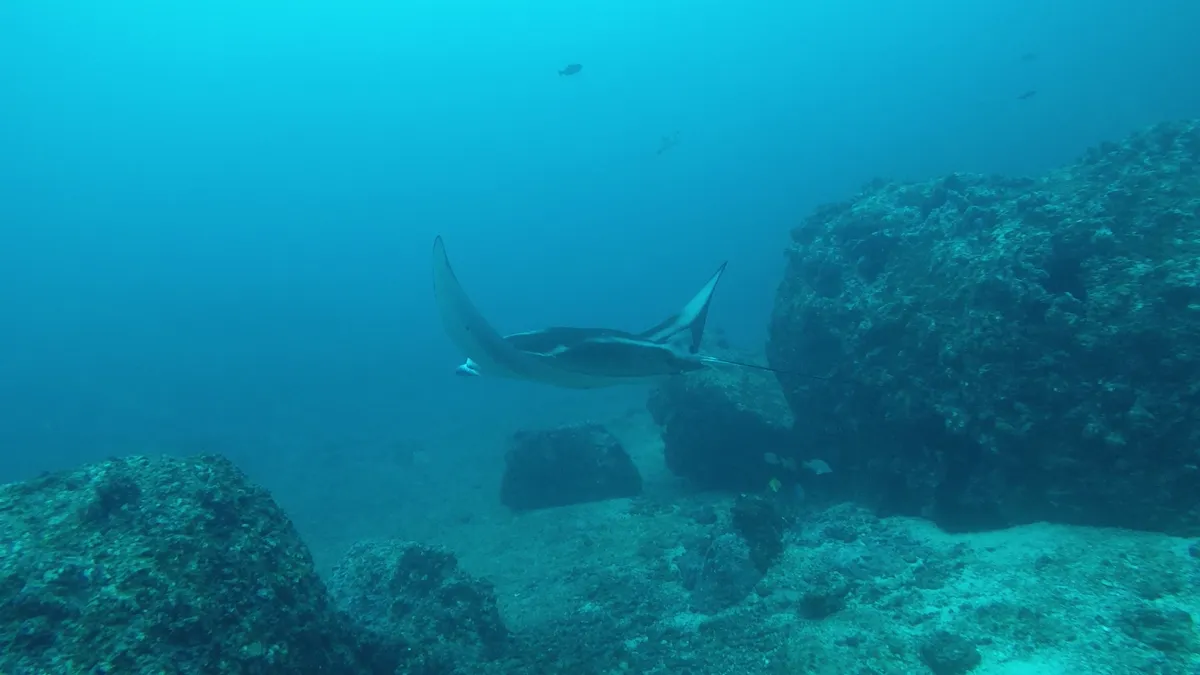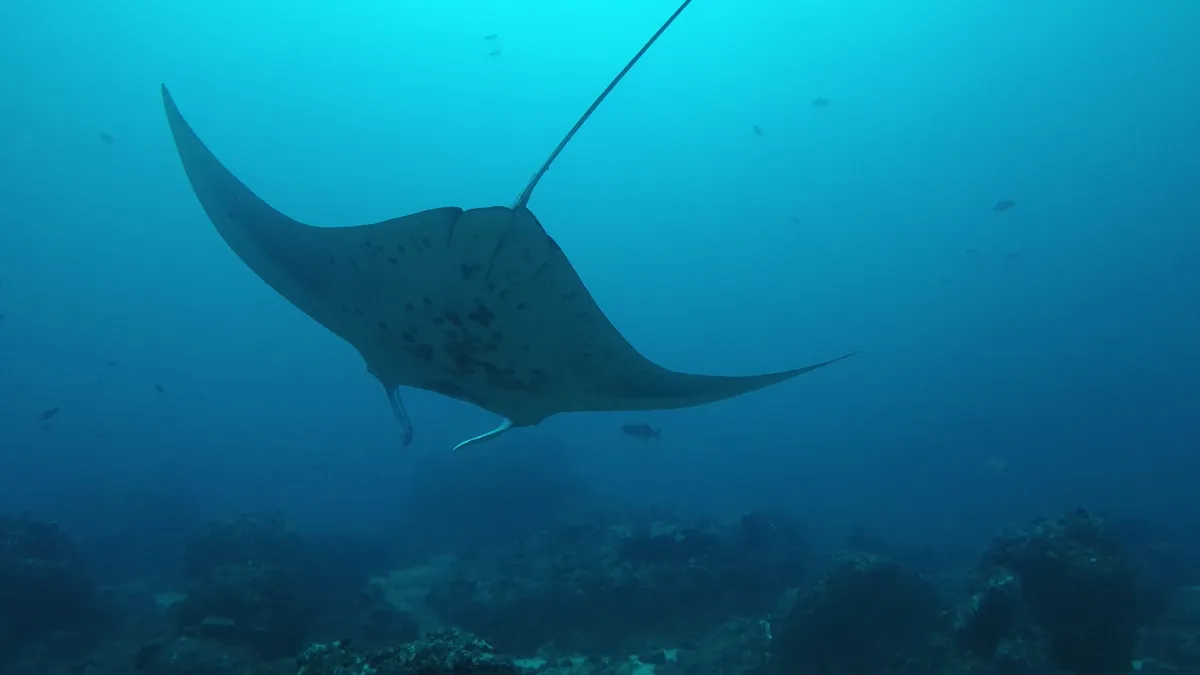A pregnant reef manta ray was encountered in the Eastern Tropical Pacific for the first time by an international team of scientists.
The reef manta ray is a threatened species, which can grow up to five metres in length. They tend to be residential and are often found in shallow habitats, where they mate and are cleaned by reef fish.
This particular ray was three and a half metres long and was seen in the waters off Cocos Island, nearly 6,000km from its previous confirmed sighting location. This represents the longest recorded straight-line distance travelled by any manta ray species.
This is also the first time confirmed sighting of a reef manta on both sides of the American continent.

“Reef mantas may travel several hundred kilometres, although they tend not to travel too far offshore,” says Randall Arauz a researcher from Fins Attached. “It is unclear how this individual could have steered so far off course, leading us to assume it was not intentional.”
Dr Mauricio Hoyos, who filmed the manta during the scientific dive, adds, “When I saw her markings and pigmentation patterns, I knew that this manta was different from the ones we usually encounter in the region.”
The photographs of the mantas unique belly spot pattern were uploaded to MantaMatcher – an online database that includes contributions from citizen scientists – and compared to other manta photos.

“I have been studying mantas for 16 years and they still constantly surprise me,” says Dr Andrea Marshall the co-founder of Marine Megafauna Foundation.
“This extraordinary sighting challenges everything we currently know about the migratory behaviour of this species and its ability to undertake long-distance movements across open ocean environments. It will be interesting to monitor her over the coming months and see how she uses this new, unfamiliar habitat," Marshall adds.
"If she adjusts well to the conditions, it begs the question: why do reef mantas not ordinarily live in this part of the ocean? While unlikely, we also cannot ignore the possibility that small populations of reef mantas may in fact exist in the Eastern Pacific and have just gone undetected.”
The pregnant manta could give birth around Cocos Island. Mantas only give birth to a single pup every two to five years and, so far, no one has ever witnessed a manta ray giving birth in the wild.
The manta ray has been fitted with an acoustic tag to determine whether it stays in the area.
